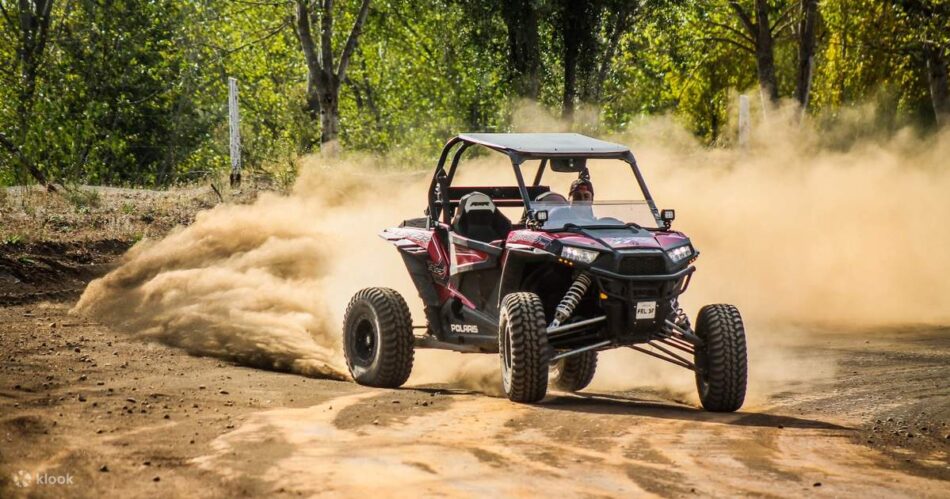Dune buggies are fun, fast, and perfect for off-road adventures. But buying one, especially on a budget, can be tricky. You want something affordable, but you don’t want to gamble with safety. The good news is that you can absolutely find a dune buggy that’s both cost-effective and safe, as long as you know what to look for.
This guide explains how to find the right dune buggy for sale and what features to prioritize.
First Things First: What Are You Using It For?
Before you even start browsing, think about how and where you’ll be using your dune buggy.
- Casual weekend rides? You can get away with a basic, no-frills model.
- Serious trail riding or desert dunes? You’ll need more suspension, stronger components, and probably a bit more power.
- Kids or teens riding it? Safety features should be your top priority.
Knowing your purpose helps you avoid overspending on features you don’t need or, worse, buying something underbuilt for the terrain you’ll face.
Set a Realistic Budget
“Affordable” means different things to different people. You’ll find a wide price range when searching for a dune buggy for sale, from under $1,000 for basic used models to well over $5,000 for more rugged, new ones.
Here’s a rough breakdown:
- Under $1,500 – Very basic, likely used. You’ll need to inspect closely for wear and tear.
- $1,500–$3,000 – Entry-level buggies, often with minimal features but decent for light use.
- $3,000–$5,000 – Better build quality, more safety features, better suspension and engine reliability.
Set a budget, but stay flexible, especially if a slightly higher price gets you something significantly safer or more durable.
What Makes a Buggy Safe?
These features matter most for safety, especially when you’re off-roading.
- Roll Cage
Think of the roll cage as your main line of defense if the buggy tips or rolls over. It’s a metal frame that surrounds the seating area and helps protect you from being crushed. You want a strong one—preferably made from welded steel. Avoid anything that looks flimsy or bolted together in a weak way. If you’re looking at a used buggy, inspect the frame closely. Look for cracks, rust, or bent areas. If it’s not solid, it’s not safe.
- Seat Belts or Harnesses
A basic seatbelt is okay for slow rides, but if you’re hitting rough trails or letting kids ride, you’ll want more than that. A 4-point or 5-point harness holds your upper body and hips firmly in place, which helps keep you secure if the buggy hits a bump or flips. Check the belts for wear and tear—frayed straps or loose buckles are a red flag.
- Suspension
Suspension keeps your ride from feeling like a bucking bull when you’re bouncing over rocks, bumps, or sand. It helps keep your tires in contact with the ground, which means better control, better braking, and less chance of flipping. If you plan on riding through sand dunes, rocky trails, or uneven ground, a good suspension system is necessary. The better it absorbs the impact, the safer your ride will be.
- Brakes
You need strong, reliable brakes, especially when you’re going downhill or dodging obstacles. Disc brakes are the better option here. They stop more quickly and consistently, especially on loose surfaces like dirt or gravel. Drum brakes are cheaper, but they don’t perform as well when things get dusty or wet. If you’re testing a buggy, don’t just check if it stops, pay attention to how it stops. Is it smooth? Does it feel strong and controlled? If not, walk away.
- Tires
The tires on a safe buggy should have deep treads (those grooves in the rubber) and thick sidewalls. These help the tires grip the ground, whether you’re in sand, mud, or rocky terrain. Street tires, or ones that look worn or bald, won’t give you that grip. Without the right tires, your buggy can slide, lose control, or get stuck in places where off-road tires would keep you moving.
Don’t Ignore Comfort and Usability
Safety comes first, but don’t forget comfort and ease of use. If it’s not fun to drive, no one will want to use it. Features like adjustable seats are helpful, especially if different people will be riding the buggy. If you’re a beginner, then you might want easy-to-use controls. You might also want a reverse gear, which can be a lifesaver when you’re stuck in a tight spot or need to turn around on a trail. And don’t overlook storage space. Having a spot for tools, snacks, or extra gear makes longer rides way more convenient.
 WhatsApp Us Now
WhatsApp Us Now










